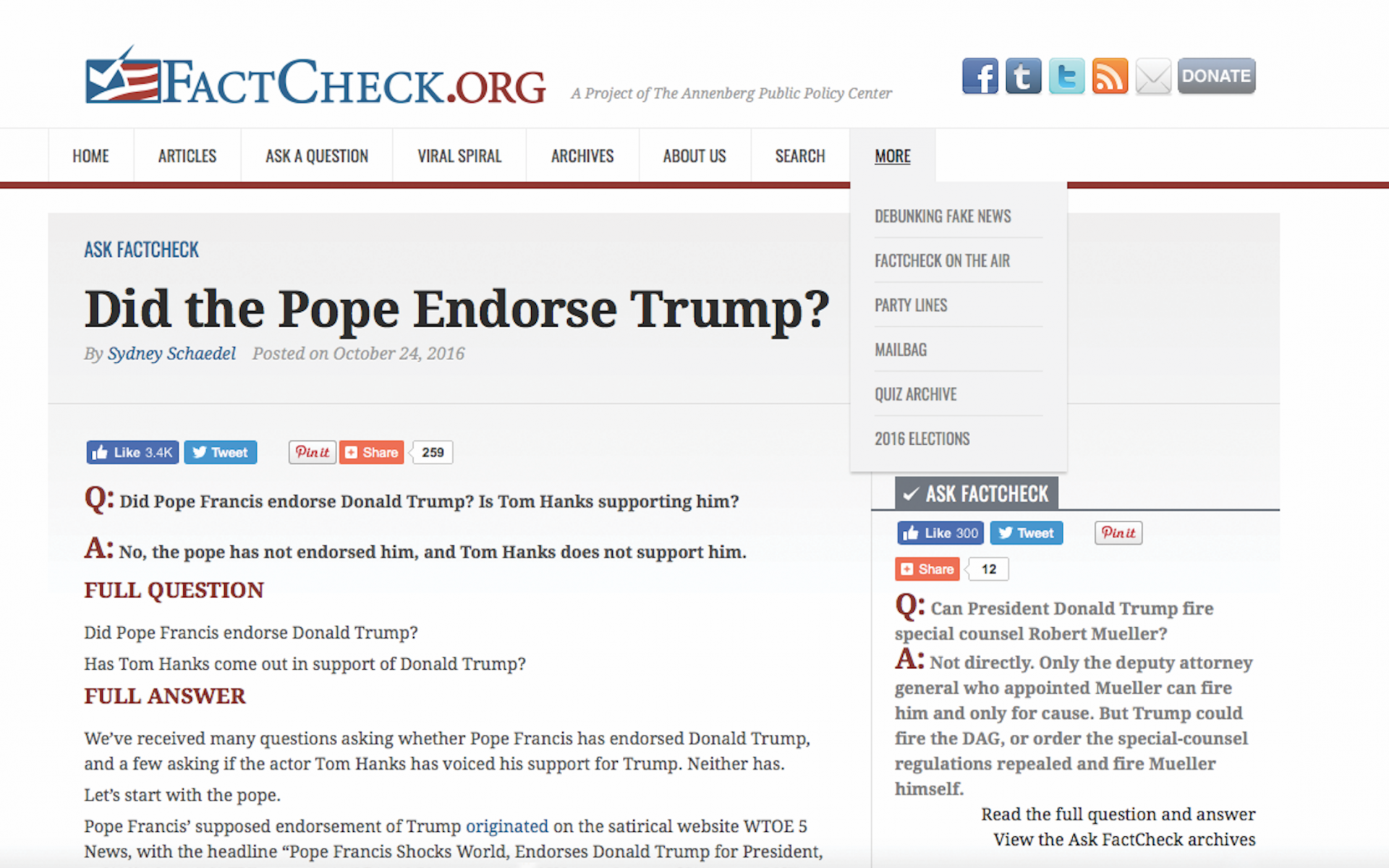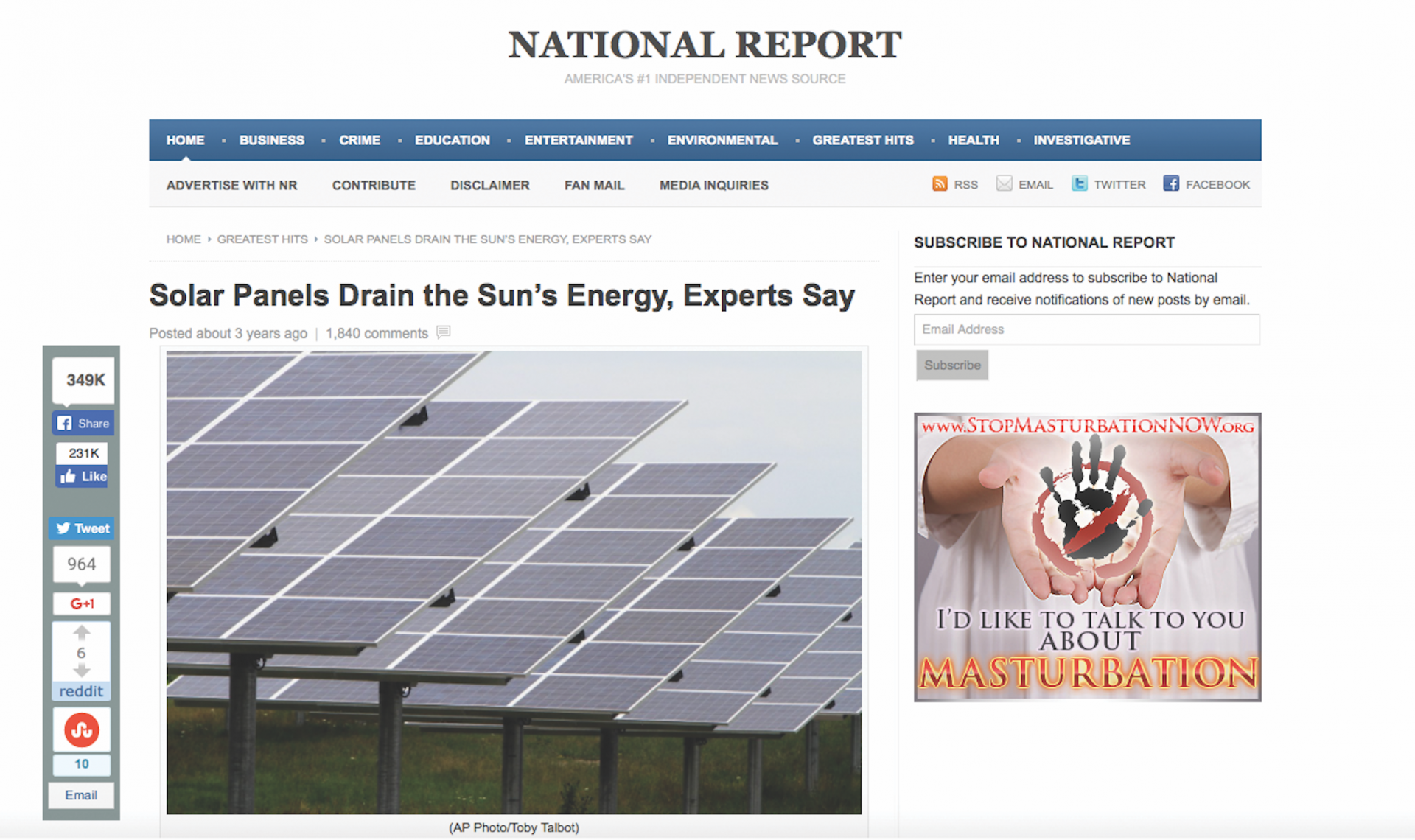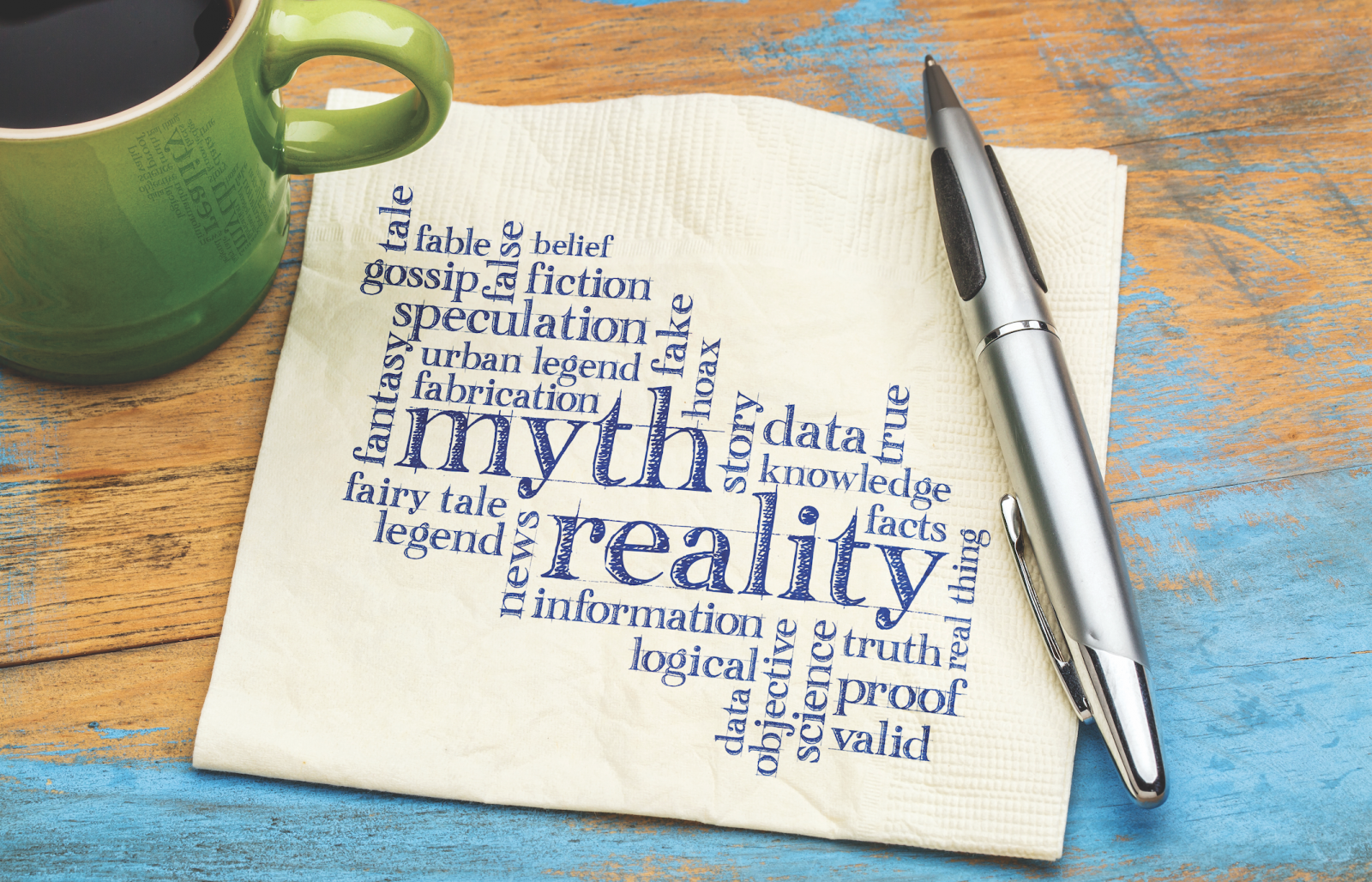According to Business Insider the biggest fake news stories for 2019 included Donald Trump’s father being a member of the KKK, that Rep. Alexandria Ocasio-Cortez proposed a ban on motorcycles (she didn’t), that the “NYC coroner who declared the death of Jeffrey Epstein a suicide, made half a million dollars a year working for the Clinton Foundation and that House speaker Nancy Pelosi was diverting Social Security funding for the Trump impeachment inquiry (she wasn’t). In all, the top 100 fake news stories of 2019 were viewed over a 150 million times on Facebook alone.
With 2020 being an election year in the United States and more and more of us relying on the internet for information as we work from home and self-isolate in a Covid world, Frank Lenk’s excellent feature from Wifi Hifi August 2017 on how to spot a fake story is as timely as ever for a second read.

The term ‘fake news’ is little better than a schoolyard taunt, often used by those who’d like to dismiss a news story without taking the trouble to rebut it on the facts. Still, the popularity of the term does raise wider questions about the reliability of news reporting in the Internet age.
Sadly, many news stories that talk about ‘fake news’ turn out to be self-referential: they are themselves fake news. Nonetheless, the term has to be taken seriously, in two ways. First, as a label for the growing flow of literally counterfeit news stories, consisting of fabricated content dressed up to look like it originated from a credible source. And second, as President Donald Trump uses it: as a criticism of journalism in general.
What’s the scale of the problem? How far does ‘fakery’ reach into the ostensibly ‘respectable’ media? And what can we as information consumers do to safeguard ourselves, and our families – particularly young children who are growing up in a world rife with ‘fake news’?
WHAT IS ‘FAKE NEWS’?
It’s hard to say just where the current popularity of the term ‘fake news’ originated. It doesn’t help that some of the accounts of fake news are clearly little better than urban legends themselves.
A recent report from Trend Micro, entitled The Fake News Machine, sheds some light on the machinery used to propagate ‘fake news’ and related Internet phenomena. Unfortunately, while noting “the proliferation of fake news,” the report offers no statistics to quantify the problem.
The meat of the text concerns the selection of tools and services available on the Internet, for the creation and distribution of ‘fake news’ and other deceptions, chiefly on social media such as Twitter and Facebook. For example, a Russian site offers to “make a video appear in YouTube’s main page for two minutes, in exchange for about US$620. Or to make 20 videos ‘trend’ on YouTube’s main page for two minutes, for about US$8,000.
Trend Micro does report tracking of over 5,400 “suspicious accounts” active on Twitter during the 2017 French election, apparently with intent to sway voters. It also shows examples of obviously fake news tweets relating to the Manchester bombing. However, the company cautions that these “may not have been part of any organized campaign.”

The report also shows, through several fictitious scenarios, how a campaign can be organized on social media, to “create a celebrity with 300,000 followers a month for $2,600,” for instance. Or to “help instigate a street protest for $200,000.” Or my favourite, “discredit a journalist for $55,000,” via Twitter. (Hint: I don’t use Twitter. Just send me the cash!)
Also cited is the actual case of a doctored photo of burning teepees in February 2017 inciting “a misguided uproar over social media” and “boycotts from a number of students at a college in Minnesota.”
Many ‘fake news’ stories originate on Websites that appear to be operated purely for this purpose. A report by BuzzFeed last August tracked the spread of stories from nine ‘fake news’ sites. These included NationalReport.net, which propagates obviously satirical stories such as “Solar Panels Drain the Sun’s Energy,” or “Trojan Names New Ultra-Thin Skin Condom after Donald Trump.”
BuzzFeed found that some stories were shared among hundreds of thousands of Facebook subscribers. Unfortunately, third-party ‘engagement’ numbers don’t tell us how many readers actually took the stories seriously, as opposed to being amused by them. But BuzzFeed does make the important point that many of these stories are almost impossible to recognize as fakes, and that their proliferation is essentially poisoning the well of genuine news. (Ed: Earlier this year a series of Cellphone towers were burned citing 5G wireless technology, 100 times faster than today’s 4G as a cause of Covid-19, a claim that actor Woody Harrelson shared with his millions of followers through social media).
These purveyors of ‘satirical’ fakery are clearly profiting from dissemination of essentially ‘nuisance’ posts. And they’re persistent about it, creating new sites as quickly as the old ones are exposed or blocked.
While it’s not easy to guess the intent of the originators, some fake stories clearly have the potential to be damaging. The New York Times cites the example of “a false article that claimed Pope Francis had endorsed Mr. Trump for president that was shared nearly a million times” on Facebook.
It’s not clear how Facebook should respond. The New York Times noted in December of 2016 that Facebook has tried to be “a neutral place where people can freely post, read and view con- tent,” and that “it does not want to be an arbiter of truth.” It added that Facebook estimates fake news to be “one fraction of a per cent of the con- tent across the network.”
Having Facebook assume the role of censor seems like a cure that would be worse than the disease. Facebook’s solution has been more clever: allowing users to flag stories as fake, then sending those with the most flags to a group of organizations that can fact check them. That group includes Internet misinformation site Snopes.com, as well as the Associated Press, PolitiFact and FactCheck.org.
Articles that fail to pass this vetting would not be deleted. Instead, they’d display a “disputed” label on Facebook, and be demoted in the news feed.
Facebook has also posted some Tips to Spot False News. These include advice such as being skeptical of headlines in all-caps or with exclamation points, and, more importantly, checking the source URL both for validity and credibility. Snopes has an even better article, 6 Quick Ways to Spot Fake News.

WHAT IS ‘REAL’ NEWS?
At times, ‘fake’ sites can be hard to distinguish from over-zealous partisan reporting that may have even less regard for the truth – or, at least, for any ‘inconvenient truth’ that doesn’t fit the writers’ ideology. This begs the question: what is ‘fake news,’ and what is earnest, if biased, reporting?
Climate-change denial sites are a good example. NASA reports that “97% or more of actively publishing climate scientists agree: climate-warming trends over the past century are extremely likely due to human activities.” Most every major scientific association concurs, as does the Pentagon. And even Shell International Petroleum, which documents the problem in its excellent half-hour 1996 documentary Climate of Concern. (It even supports the idea of a carbon tax.)
And yet, many sites continue to argue strenuously that this consensus is a) nonexistent, b) based on near-universal incompetence, or c) a conspiracy. Some sites present deep technical arguments in support of their case. So how strong does the scientific consensus have to be before denial is labeled ‘fake news’?
It’s not a trivial question. Surveys indicate that public opinion has been strongly impacted by the ongoing denial campaign, with most people greatly underestimating the degree of agreement among scientists. Only recently have the words “climate change” started to be uttered on network newscasts. Politicians continue to either claim climate change is a hoax or pay lip-service to the looming threat, while continuing to support devastating fossil-fuel developments.
In this case, both politicians and the press are failing us when it comes to filtering out the fakes from the facts.
President Trump in particular, despite frequent references to ‘the fake media,’ is the poster boy for political use of ‘fake news.’ In January, The New York Times documented 10 cases over the past few years of President Trump gleefully propagating egregiously false news stories. Trump has even supported the assertion that some vaccines are linked to autism – a notion that has zero scientific support (other than from disbarred quacks), and which has led to large numbers of rather well-documented deaths of children. (Bleach as a cure for Covid? The list has only grown longer since 2017)
Spreading this kind of ‘fake news’ probably should be considered a criminal act. But the blame is shared equally by our governments, businesses, science and the media. None of these institutions has done a good enough job of communicating true facts, or of countering false-hoods propagated by others. Each has, at times, been a willing party to fabrications that served their own ends.
Sadly, the one science all our institutions have subscribed to is the science of manipulating public opinion, as developed primarily in the U.S. by Edward Bernays. After helping to sell World War I to a strongly pacifist public, Bernays won fame for such ‘fake news’ tactics as calling cigarettes “Torches of Freedom,” in order to get more women smoking.
Bernays’ approach was adopted whole-heartedly by the business world. As early as 1957, Vance Packard’s book The Hidden Persuaders alerted millions of readers to the true nature of advertising: no longer about disseminating information, but about cunningly establishing consumer mind-share at a deep subconscious level.
Today, we call it ‘branding.’ It’s a logical approach to selling in a crowded market, whether the product is pickles or presidents. But it has the unfortunate side effect of weakening the ‘immune system’ of the media it exploits. At a certain point, those media become dangerously susceptible to infection. Fake news spreads, credibility plummets, and Donald Trump becomes President.
No one is entirely happy, but no one is willing to admit the root of the problem, let alone tackle it.
WHATEVER HAPPENED TO JOURNALISM?
In a recent speech, Chris Hedges, author and long-time foreign correspondent for The New York Times, stated “That’s why I became a journalist: not to be objective, or neutral – which is all crap, anyway – but to make the world a better place.”
This kind of crusading journalist has become a rarity, and ‘the press’ has been losing credibility for decades. Journalists profess an impossible neutrality, while forgetting their Hippocratic duty to the truth, and to the service of the public. Standards have fallen so low that preposterous ‘fake news’ no longer seems obviously out of place.
Part of the problem is that all major news outlets are owned by a few wealthy corporations, or even wealthier individuals. The Washington Post, for example, is owned by Amazon founder Jeff Bezos. The majority shareholder of The New York Times is Mexican tycoon Carlos Slim. These are two of the richest men in the world, with a combined worth of well over US$200 billion.
The profit motive brings with it vested interests that can’t be made compatible with honest reporting. Meanwhile the concentration of media ownership continues to increase. President Trump’s government lately okayed the purchase of Tribune Media by Sinclair Broadcast Group. This gives the latter company unprecedented control of local TV, reaching about 70% of U.S. households.
The New York Times reports that Sinclair frequently sends its stations “must-run” video segments, with a strong right-wing slant. Astoundingly, one recent segment talked about “the troubling trend of irresponsible, one-sided news stories plaguing our country,” and accused “some members of the national media” of “using their platforms to push their own personal bias and agenda.”
At the same time, newspapers have diluted their coverage to a point where it’s little more than light entertainment. On the day that Trump pulled out of the Paris climate accord, the Toronto Star devoted two-thirds of its front page, including a bright red headline, to a lurid but inconsequential murder trial.
It’s worrisome that a story of life-or-death significance for our entire civilization can cede the front page to a matter of purely local and momentary interest. But it’s no less disturbing that frequent, prominent coverage of violent crimes should be allowed to distort the reality: that crime rates have been falling steadily for decades. The upshot is that major, reputable newspapers are routinely slanting their coverage so as to infect their readership with paranoia – for entirely the wrong reason.
Some bad journalism clearly results from an eagerness to serve politically-desirable narratives. The result can look very much like actual ‘fake news.’ In December 2016, for example, the Washington Post was quick to report that Russians had hacked a Vermont utility and placed the U.S. electrical grid at risk. This ‘hack’ almost immediately turned out to consist of unidentified malware found on a laptop that wasn’t in any way connected to the grid.
In November of 2016 the Washington Post published a story talking about 200 Websites that had been identified as “routine peddlers of Russian propaganda” by a group called PropOrNot. No spokesperson for PropOrNot was named, and the methodology behind the blacklist was not detailed. Several well-respected sites swiftly challenged their inclusion.
The story remains online, but now bears a belated disclaimer to the effect that the Post had not actually named the accused sites, and “does not vouch for the validity of PropOrNot’s findings.”
TV news is no better. Instead of a fiercely committed Edward R. Murrow, we have NBC news anchor Brian Williams, who chronically ‘misremembered’ having been shot down in a helicopter over Iraq. Williams was ‘demoted’ for his non-factual statements – all the way to the top spot on MSNBC. Coincidentally, MSNBC is the same network that canceled Phil Donahue’s highly-rated talk show in 2003, on account of Donahue’s attempts at questioning the rationale for the Iraq war. Somehow, it all makes sense.
The failings of CBS news program 60 Minutes have been documented in not one but two big-budget Hollywood films. The Insider (1999) showed how the producers were pressured to delay a report on cigarette companies concealing the dangers of tobacco. Truth (2015) revealed how the network failed to stand behind one of the show’s producers, and reporter Dan Rather, when a controversial story was challenged by powerful government interests.
The news story at issue in Truth was indeed a tricky one, and might not have held up to scru- tiny. But the fact remains, if reporters on a top show like 60 Minutes can’t expect total support when they tackle a risky story, then that kind of reporting simply won’t happen. Opening a big can of worms needs a big bankroll, and the com- mitment to use it. That’s not a business model that profit-driven corporations can be expected to embrace.
So it’s hardly surprising that TV news rarely questions official narratives, and instead focuses most of its airtime on feel-good kitten-in-the-tree stories or sports.
HOW DOES THE INTERNET CHANGE THINGS?
It’s always been hard to know who to believe, and who to trust. And the solution remains as always: trust no one, verify everything. That’s an important lesson to teach your kids.
While the Internet has perpetuated the ability to disseminate “fake news” much more quickly, it also makes verifying things a whole lot easier. It’s possible to cross-check any news story with a few clicks. And worthwhile, if the story is one you find at all important. Your favourite search engine will quickly tell you whether you’re looking at genuine news, or a devious fake based on researching a series of reputable and trusted sources. As a bonus, you’ll start gaining perspective on the topic that you’d never have pulled from any single source.
Before you know it, you’re regularly perusing multiple overlapping news outlets. You might start with mainstream sites like the Toronto Star, the Globe and Mail and the CBC. Then branch out to some of the better ‘alternative’ sites that you’ve vetted as being reliable. For example, TheTyee.ca is a highly-respected online journal, with a distinctive Canadian West Coast view- point. TheWalrus.ca is a bit more traditional, but always interesting.
Of popular American sites, MotherJones.com and RollingStone.com are solid left-ish options. Truthout.org,Alternet.org and DemocracyNow.org are a bit farther along the spectrum. On the other hand, TheFederalist.com takes a fairly hard right-wing view, with a dash of libertarianism. And then there’s TheGuardian.com: a lively U.K. site that averages out roughly centrist, but offers scattered contributions from all parts of the political continuum.
There are lots more, of course. Once you’re really hooked, you can go international. To find out what people are talking about in the Middle East, have a look at Aljazeera.com. For Latin America, check TelesurTV.net/english. In Germany, there’s Spiegel.de/international. And, of course, for Russia there’s the (rather undeservedly) notorious RT.com. (The English-language site is actually much better on international coverage than internal Russian events.)
Will you find the Truth with a capital T at any of these sites? Don’t get your hopes up! What you will get is a cross-check on your own awareness. If you follow a specific story across several sites, it’s like suddenly seeing it in 3D: you start to perceive entirely new dimensions that were previously beyond the range of your senses.
There are also many generic resources on the Internet, which we sometimes neglect to exploit. YouTube, for example, hosts an amazingly rich variety of video news content, recent and historical. Just be sure you know what you’re looking for, and don’t get seduced by ‘funny’ videos of somebody’s cat.
Also, don’t overlook Wikipedia. The site draws a lot of criticism for carrying false details or doctored postings, but the concerns tend to be exaggerated. Most articles simply aren’t controversial enough to attract saboteurs. If you look up Quantum Electrodynamics, for instance, the equations and Feynman diagrams are probably correct.
More importantly, all Wikipedia articles are footnoted, making them a great starting point for further research. Don’t trust the text; follow the footnotes. Knowledge is cumulative, and so is trust. One reputable source can validate an entire chain of news stories.
MENTAL HYGIENE
Bad journalism, bias, propaganda and outright deception have been around since the first Neanderthal told a fib, and they’re not going away any time soon. In recent years the Internet has allowed ‘fake news’ to flourish, but overall it’s been a huge gain.
On the Internet, everyone has a voice. Major outlets like The Globe and Mail or The New York Times have to compete on an (almost) even footing with every blogger on Earth. The competition is overwhelmingly healthy. The ultimate remedy for ‘fake news’ isn’t some mythical touchstone called ‘real news;’ It’s simply more news. Plus, a bit of mental hygiene that we all probably needed anyway.









